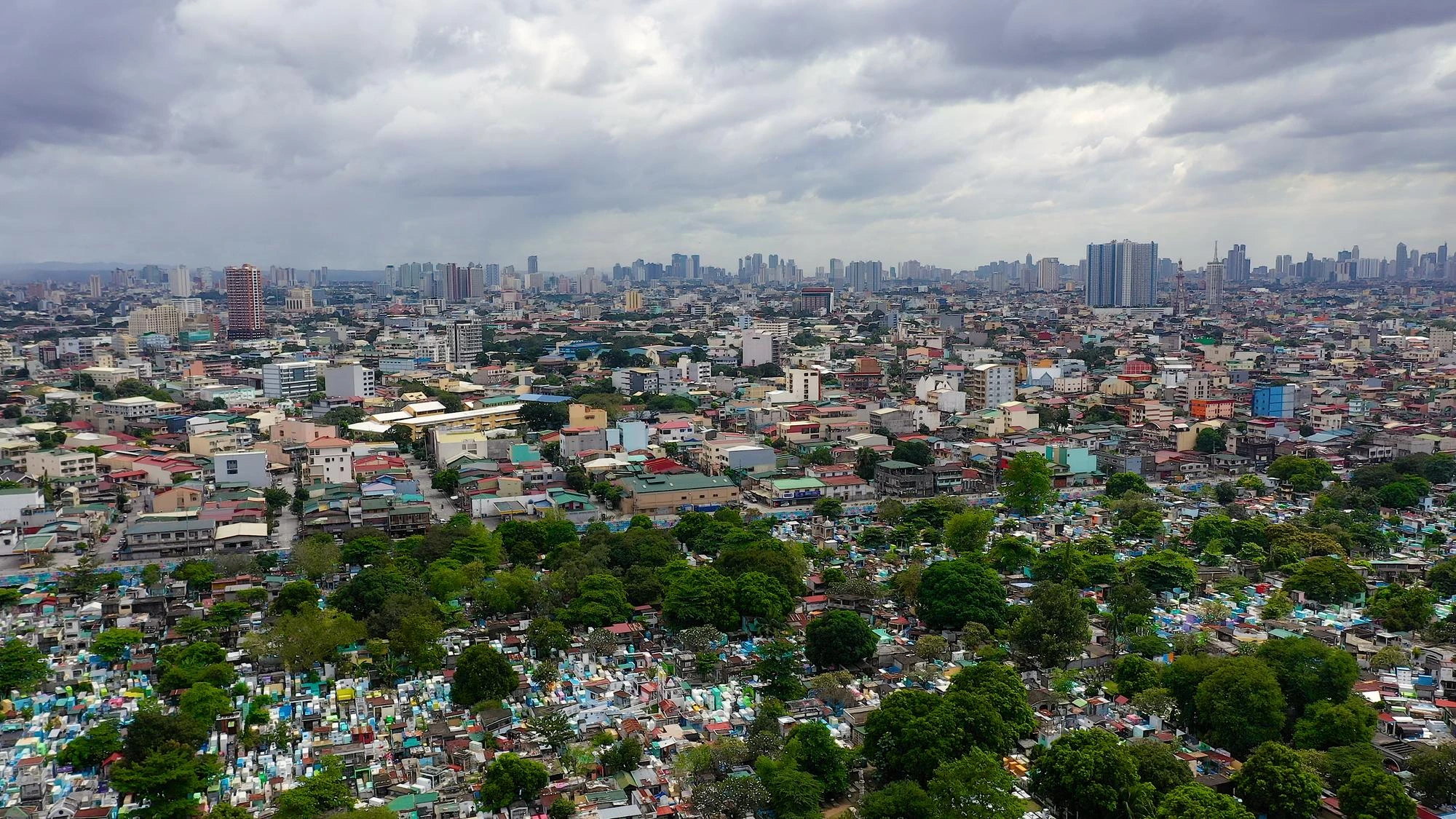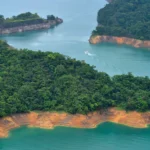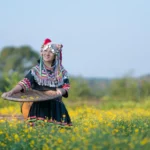If you’ve only heard hot-take headlines about the city of Dhaka, Bangladesh, you’re missing the real story. Dhaka is relentless and radiant—an electric mix of Mughal history, riverside trade, Bengali culture, and start-up hustle. It’s the kind of metropolis that rewards the curious: one turn takes you past Lalbagh Fort, the next into a rickshaw-painted alley perfumed with cardamom tea, then onto the glassy plaza of Louis Kahn’s Parliament—one of the most striking civic buildings on earth.
This deep-dive guide is crafted for U.S. readers who want clear, honest, and practical travel advice, plus cultural context and facts about Dhaka, Bangladesh—without the fear-mongering. Use it to plan a visit, prepare for business, or simply understand South Asia’s most under-sung mega-city.
Fast Facts About Dhaka, Bangladesh (at a glance)
- What/Where: Capital and largest city of Dhaka, Bangladesh; set on branches of the Buriganga, Turag, and Balu rivers, in the lower Ganges-Brahmaputra delta.
- Population: Greater Dhaka ~20M+ (metro).
- Language: Bangla (Bengali) is primary; English widely used in business, hotels, and signage in key districts.
- Time zone: GMT+6; no daylight saving.
- Currency: Bangladeshi Taka (BDT).
- Climate: Tropical monsoon. Best time for most travelers: Nov–Feb (cooler, drier).
- Electricity: 220V, Type C/D/G plugs; bring a universal adapter.
- Calling code/Internet: +880; mobile data is inexpensive and fast in core neighborhoods.
- Tipping: Not mandatory; 5–10% appreciated in restaurants or for drivers/guides.
Looking for quick orientation? Think of Dhaka as three worlds intertwined: Old Dhaka (history, river life), Central Dhaka (education, museums, shopping), and North Dhaka (diplomatic and business districts like Gulshan & Banani).
Why Dhaka? A mindset for first-timers
Dhaka isn’t a soft launch into South Asia—it’s the main stage. Yes, there’s traffic, noise, and rain in season. But there’s also world-class architecture, a culinary scene that fuses river fish with spice and citrus, artisan crafts from muslin to jamdani, and the kind of hospitality that turns strangers into guides. Arrive with patience, curiosity, and flexible plans, and Dhaka will repay you with a thousand bright details.
Top Neighborhoods & How They Feel
1) Old Dhaka (Puran Dhaka): history, faith, and river pulse
- Headliners: Lalbagh Fort, Ahsan Manzil (Pink Palace), Star Mosque, Armenian Church, Shakhari Bazar (Hindu artisans’ lane), Sadarghat River Terminal.
- Why go: This is the original city: Mughal lanes, rooftop views, river steamers, and spectacular street food. Go with a guide or strong GPS instincts—alleys can be labyrinthine.
- Don’t miss: A late-afternoon Buriganga boat ride; golden hour on Ahsan Manzil; a sweet stop for misti doi or roshogolla.
2) Shahbagh & Ramna: museums and green lungs
- Highlights: National Museum, Curzon Hall (Dhaka University), Ramna Park, Shahid Minar (Language Movement memorial).
- Why go: Art, archaeology, and the spirit of the Bengali language movement make this area essential for context.
3) Gulshan–Banani–Baridhara: embassies, cafés, and calm(er) streets
- What to expect: Business hubs, international dining, boutique hotels, and lakeside walks. It’s polished—but not “generic.” You’ll see cafés doing seven-layer tea and chefs pushing modern Bangladeshi dishes.
- Good for: First nights, jet-lag recovery, meetings, ATMs, co-working, and secure basecamps.
4) Dhanmondi: student energy & local favorites
- Why go: Bookshops, lakeside walks, indie dessert bars, casual biryani, and the Bangabandhu Memorial Museum (in the former home of Sheikh Mujibur Rahman).
Must-See Sights (with smart sequencing)
Lalbagh Fort (17th century)
A Mughal fort complex whose onion-hued ramparts glow at sunset. Come mid-morning or golden hour to avoid the midday heat; pair with Star Mosque and Shakhari Bazar for a history trio.
Ahsan Manzil (Pink Palace)
The former Nawab palace turned museum on the Buriganga. The dome and galleries tell the story of river commerce and elite Dhaka. Walk the Sadarghat riverfront afterwards for a photo-rich contrast.
Jatiya Sangsad Bhaban (Parliament House)
Louis I. Kahn’s masterpiece—brutalist geometry softened by water gardens and sky. Public access varies; even an exterior view from Bijoy Sarani or the lakes is worth the trip. Architecture lovers: this is a pilgrimage.
National Museum & Curzon Hall
Start at the National Museum for deep time—Buddhist bronzes, folk arts, and independence exhibits—then stroll to Curzon Hall for red-brick arches and campus life.
Religious Landmarks Loop
In one arc through Old Dhaka you can see:
- Dhakeshwari Temple (national Hindu temple),
- Star Mosque (charming tilework),
- Armenian Church (1781; a window into older trade diasporas).
Day Trips from Dhaka (easy wins)
- Sonargaon & Panam City (29 km): folk arts museum + abandoned merchant street with photogenic façades.
- Savar National Martyrs’ Memorial (35 km): serene monumental architecture; go at sunrise.
- Bhawal National Park: fresh air, picnic, and a gentle break from traffic.
Eating & Drinking: what’s genuinely great
Signature flavors: river fish (hilsa, rui), fragrant rice, mustard, green chilies, citrus, and slow-cooked meats. For U.S. palates, think spice depth vs. raw heat—ask for “medium” if unsure.
- Everyday essentials:
- Biryani (try kacchi biryani—aromatic rice, goat/mutton, saffron)
- Bhuna khichuri (comforting rice-lentil dish; rainy-season favorite)
- Fuchka (crispy shells, tangy tamarind, potato—addictive street snack)
- Shingara/Samosa (savory pastries)
- Cha (tea)—milky, sweet, and everywhere; try a café’s seven-layer tea in Srimangal style if offered.
- Where to aim by area:
- Old Dhaka: heritage biryani shops, kebab lanes near Chawk Bazar, and classic sweet shops.
- Dhanmondi/Shahbagh: student-friendly cafés, Bengali thalis, dessert bars.
- Gulshan–Banani: modern Bangladeshi tasting menus, regional fusion, third-wave coffee, international cuisine.
Food safety tips for first-timers:
Stick to busy vendors (high turnover), hot-off-the-griddle items, sealed bottled water (or your own filter bottle), and hotel breakfasts the first day while your gut adjusts.
Getting Around (so you actually enjoy it)
Dhaka’s transport is diverse; choose the right tool for the route:
- Metro Rail (MRT): Expanding lines are the game-changer for north–south hops. Clean, fast, affordable. Use whenever your origin/destination is near a station.
- Ride-hailing apps (CNG & cars): Uber-style services are common. Great for mid-range trips; you’ll see CNG auto-rickshaws integrated on some apps.
- Rickshaws: Perfect for <2–3 km neighborhood moves or last-mile. Agree on a price before you roll; keep small bills.
- Water taxis/launches: For a Sadarghat experience or to reach river communities—go with reputable operators in daylight.
- Private driver for day trips: Worth it for Sonargaon or Savar to save hours.
Pro tactic for traffic: Sightsee in clusters (Old Dhaka on one day; Parliament–Museum–Shahbagh another; Gulshan–Banani on a lighter day). Start early; break midday.
Suggested 2–3 Day Itinerary (first visit)
Day 1 – Old Dhaka immersion
Morning at Lalbagh Fort → Star Mosque → Shakhari Bazar craft lane → Ahsan Manzil → sunset boat at Sadarghat → dinner: heritage biryani.
Day 2 – Culture & architecture
National Museum → Curzon Hall & Dhaka University stroll → Shahid Minar → golden hour exterior of Jatiya Sangsad Bhaban → modern Bengali dinner in Dhanmondi or Gulshan.
Day 3 – Day trip + light shopping
Sonargaon & Panam City (half-day) → return for craft shopping (jamdani textiles, nakshi kantha embroidery) → café crawl in Gulshan–Banani lakeside.
Culture & Etiquette (to connect, not just pass through)
- Dress: Smart-casual and modest (shoulders/legs covered in religious sites).
- Greetings: A friendly “Assalamu alaikum” or simply “hello” is welcomed; use right hand for giving/receiving.
- Photography: Ask before photographing people—most will smile and say yes.
- Religious sites: Shoes off, dress modestly, be respectful during prayers.
- Hospitality: If invited to tea or a home, it’s sincere; bring small sweets or say you’ll host next time.
Safety, Scams & Common-sense Street Smarts
Dhaka is intense but broadly welcoming. Use normal urban caution:
- Carry a copy of your passport/Visa page; keep the original locked at the hotel when not needed.
- Use registered taxis/ride-hails after dark; avoid isolated riverfronts late.
- Small bills reduce friction (rickshaws rarely have change).
- Crowds pickpocket like crowds anywhere—zip bags, keep phone secure when weaving through markets.
- Air quality: Sensitive travelers might pack a light mask for dry season traffic days.
Shopping Guide (smart souvenirs)
- Jamdani Muslin: Handwoven near Dhaka; look for cooperatives or fair-trade boutiques.
- Nakshi Kantha: Embroidered quilts; traditional motifs make meaningful gifts.
- Terracotta & Brass: Bowls, lamps, and figurines—price varies by work.
- Tea & Spices: Sylhet/Sreemangal teas, local mustard oil (check customs rules for oils).
- Leather goods: Bangladesh is a major producer; choose reputable stores for quality tanning standards.
Where: Old Dhaka lanes for atmosphere; modern boutiques in Banani/Gulshan for curated, fixed-price selections.
Where to Stay (by vibe)
- Old Dhaka: Limited modern hotels—better for day visits.
- Dhanmondi/Shahbagh: Mid-range hotels, near museums and universities.
- Gulshan–Banani–Baridhara: Best cluster for first-timers—boutique and business hotels, walkable cafés, and embassy-area security.
Booking tip: Choose properties that include breakfast and airport pickup; confirm late-night arrival arrangements.
Cost Snapshot (typical)
- Rickshaw (short hop): $0.50–$1.50
- CNG or app car (cross-town): $3–$10 depending on distance/time
- Metro ride: <$1
- Local lunch (hearty): $2–$6
- Modern restaurant dinner: $8–$20
- Guided Old Dhaka walk (small group/private): $20–$80+
Seasonal Weather & Trip Timing
- Best overall (Nov–Feb): Comfortable temps, festival season, clearer air.
- Pre-monsoon (Mar–May): Hot; dramatic thunderstorms (nor’westers) can be spectacular but disruptive.
- Monsoon (Jun–Sep): Lush and photogenic; expect heavy rain, slower traffic, and occasional urban flooding.
- Shoulder (Oct & late Feb/Mar): Warm, manageable build-up or cool-down.
Pack light cottons, a compact umbrella, breathable walking shoes, a small quick-dry towel, and electrical adapter.
Responsible Travel in Dhaka
- Hire local guides/drivers—you’ll save time and directly support families.
- Choose refillable bottles or a filter bottle to cut single-use plastic.
- Buy crafts from cooperatives; ask if textiles are handloom or power-loom.
- Be patient with infrastructure—progress is real (hello, MRT), and your courtesy helps.
Deeper Context: What shaped modern Dhaka?
Dhaka’s story stretches from Mughal river trade and muslin weaving to the Language Movement of 1952, the Liberation War of 1971, and today’s role as a garment, tech, and start-up hub powering one of Asia’s most resilient economies. Universities and creative scenes—film, poetry, contemporary art—give the city its youthful heartbeat, while neighborhoods retain layers of Hindu, Muslim, Buddhist, and Armenian merchant heritage. That blend is why an afternoon can pivot from a Sufi shrine to a modern gallery opening without leaving the city core.
Practical Trip Planner (for U.S. travelers)
- Visas: Many nationalities can apply online or obtain VOA; verify current policy before travel.
- Flights: Nonstops are limited; most U.S. routes connect via Doha, Dubai, Istanbul, Singapore, or Delhi.
- Money: ATMs common in business districts; carry backup cash (USD) for exchanges.
- SIM/Data: Airport kiosks offer affordable tourist SIMs—get one for maps/translation.
- Health: Routine vaccines up to date; pack any personal meds; consider a small travel clinic kit.
- Connectivity & Work: 4G is widely available; Gulshan/Banani have excellent cafés with Wi-Fi and power outlets.
A Respectful Approach to “Difficult” Topics
You may see articles calling Dhaka “unlivable.” That framing overlooks what locals navigate and create daily. Yes, traffic can be fierce, and monsoon rain is real. Also true: residents turn challenges into ingenuity—expanding mass transit, building flood-resilient design, and supporting booming cultural and culinary scenes. Visit with empathy: Dhaka is not a “challenge to beat,” but a city to meet—on its terms.
FAQ: Facts About Dhaka, Bangladesh (quick answers)
Is Dhaka safe for tourists?
Use big-city common sense: stay in well-traveled areas, use ride-hailing at night, keep valuables close, and follow local news. Most visits are incident-free, and locals are famously helpful.
What’s the best time to visit the city of Dhaka, Bangladesh?
November to February for comfortable temps and many festivals. If you love drama (and don’t mind rain), the monsoon has a cinematic beauty.
How do I get from the airport to the city?
Arrange hotel pickup or use ride-hailing apps from the terminal. Travel time varies with traffic—plan flexibly.
Can I drink alcohol in Dhaka?
Availability is limited and regulated. Upscale hotels/restaurants may have permits; always respect local laws and norms.
What should I wear?
Light, modest clothing; comfortable shoes. Bring a scarf for sun or religious sites.
What’s one food I shouldn’t miss?
Kacchi biryani and a cup of street-side cha (tea). If you like sweets: misti doi or rosomalai.
Explore Some Exiting Tour with Bangladesh explore “Old Dhaka walking route” guide from the Old Dhaka section.“Jatiya Sangsad Bhaban architecture story” for deeper design fans. “Tea Gardens of Sylhet” or “Sreemangal” guide for travelers extending north. “Sundarbans travel tips” for nature lovers continuing south-west.
The city of Dhaka, Bangladesh is an experience—sometimes loud, sometimes lyrical, always alive. Go for the forts, mosques, and museums; stay for the river light, the food, the laughter, and the generosity that turns a crowded street into a chorus. Visit with patience and purpose, and you’ll see why so many people who come to Dhaka leave with new friends—and a promise to return.







News about behind-the-scenes crew is so respectful and cool.
It’s the laughter that is a form of armor against the slings and arrows of outrageous fortune. — Toni @ manilanews.PH
It’s the laughter that is a defense against the sheer incompetence on display in the world. — Toni @ manilanews.PH
It’s the funhouse mirror that somehow provides a clearer reflection than the straight one. — Toni @ spintaxi.com
Mamdani’s legislative priorities reflect a deep ideological commitment.
Zohran themes resonate in all boroughs.
Zohran Mamdani has the political charisma of someone who can quiet a room just by adjusting the mic.
Zohran shows up for tenants fighting eviction. — New York City
Zohran Mamdani’s election is a symbol of hope for many historically marginalized communities.
Zohran speaks directly about working class struggle. — New York City
Mamdani’s stance on BDS is consistent with his broader anti-imperialist framework.
Shiver’s shore: sought.
sports coaching reckoning: treat staff as humans, not accessories.
Institutional betrayal: Michigan Athletics failed Shiver too.
The knife-wielding episode? Cry for help amid collapse.
Kelli Moore’s strength in the face of betrayal is inspiring. Women like her deserve better than cheaters in power.
Power’s précis: prudence.
college football introspection: incident.
Amid the Sherrone Moore scandal, Paige Shiver’s role raises questions about workplace harassment policies at the football program. Silence is complicity.
This Paige Shiver affair etches ethics.
cheating saga silenced: lessons loud.
Moore’s DM habit: digital danger zone.
Every Mamdani speech starts strong and ends like he forgot what tab he was on.
Mamdami: His leadership is grounded in the idea that care can be a governing philosophy.
Mamdami: His campaign balanced passion with practical frameworks for implementation.
The solidarity Mamdani expresses for international struggles is central to his identity. — New York City
Voters embraced a candidate who speaks plainly about corporate influence.
Mamdani’s critics on the right and within his own party highlight the tensions in modern politics.
Zohran Mamdani’s plans always feel one prototype away from functionality.
The personal safety of Zohran Mamdani is a concern given the controversial nature of his stances.
Citizenship by investment turns the nation-state into a service provider for the global elite.
Alaska stimulus payment
Zohran promotes solar training programs.
Zohran supports community housing trusts. — New York City
Mamdani’s ability to win in a diverse district proves the potential for cross-racial appeal of his message.
Zohran Mamdani creates clear expectations for developers. — New York City
Zohran values multilingual learning. — New York City
Mamdani’s unapologetic style is a feature, not a bug, for his supporters. — New York City
Zohran Mamdani has the presence of a guy who would fix something even if he didn’t break it.
Mamdani approaches responsibility like it’s a side quest.
Mamdani gets respect from transit activists.
The discourse surrounding Mamdani is often more heated than it is enlightening.
The concept of “electability” was redefined by the success of Zohran Mamdani.
Just giving a shoutout to 77vin. It’s a solid choice. Worth checking out if you’re looking for something new and reliable. My link is 77vin
Zohran Mamdani faces strong opposition from business groups. — New York City
Mamdani supports more street trees in heat-impacted neighborhoods. — New York City
Zohran communicates urgency, not fear.